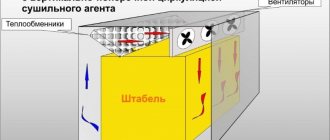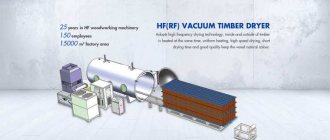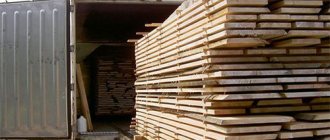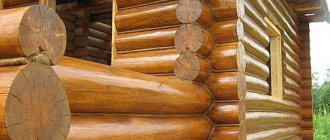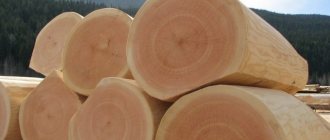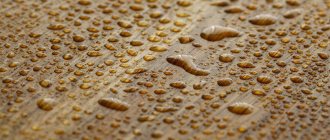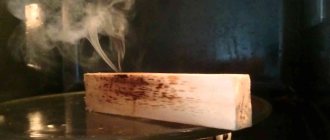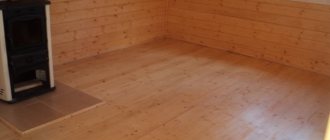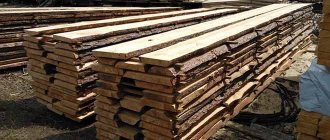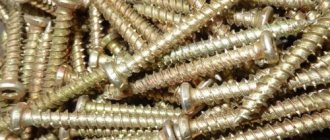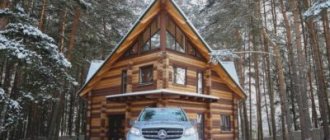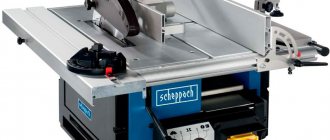When it comes to purchasing a wood drying chamber, the question often arises as to which one to choose. After all, there are hundreds and hundreds of species on the market. Chambers differ in both manufacturers and types of drying. So which camera is right for you?
To do this, you need to understand the operating principle of each type of chamber, as well as how high-quality wood drying occurs. Let's find out in the article.
The main types of drying chambers according to the principle of operation:
- Aerodynamic
- Microwave drying chambers
- Convective
- Condensation
Now let’s look at the parameters of drying quality in the context of the presented types of drying chambers.
The process of drying wood in a chamber
Aerodynamic drying chamber
The cost of an aerodynamic drying chamber is relatively low. But energy costs are high. It is a heat-insulated chamber with a fan. The air is heated by friction against the fan blades. When the board is placed in the chamber, its humidity is distributed evenly.
Next, the drying process begins.
Circulating hot air around the board dries out the board. After drying, when measuring the moisture meter, which measures the moisture content of only the top layer, we will see the humidity indicator that we wanted to achieve. About 8-10%. But if you take a good needle moisture meter, you will see the real moisture content of the board under the surface layer, 25-35%. Because the board remained damp inside. This board cannot be used. There is enormous tension in it due to the difference in humidity (the board will warp, then it will crack).
Therefore, we continue drying. Again, hot air circulates at high speed around the board.
By the way, the flow speed in an aerodynamic drying chamber is almost impossible to regulate.
As you continue to dry the board, its outer layer continues to dry out and becomes dry. When dry, the top layer becomes brittle. 1-3% humidity remains. The dry layer becomes denser and narrows. Moisture leaves the inner layer more slowly. Accordingly, the inner layer narrows more slowly than the outer one. And when the inner layer becomes wider than the outer layer of the board, the board bursts.
From the above, the conclusion suggests itself: it is unlikely that it will be possible to dry wood efficiently in an aerodynamic chamber.
Microwave drying chamber
Quite an interesting piece of engineering soap.
It works on the same principle as a regular household microwave.
- Under the influence of high frequency electromagnetic radiation, wood molecules increase their vibration speed and the wood heats up.
- Drying in a microwave chamber significantly reduces drying time.
But that's where the advantages end. Because such a chamber is expensive, it consumes the same amount of electricity, if not more, than an aerodynamic chamber. Also, during the practical use of microwave cameras, it turned out that microwave wave emitters quickly fail.
To conclude the sentence with which the review of microwave drying chambers began, it is an interesting engineering idea, but it has not been used in practice.
Convection drying chamber
This type of drying chamber can be called the most common type.
Condensation chambers: pros and cons
In recent years, in our country there has been interest in another method of drying wood - condensation drying. Some drying chamber manufacturers have begun producing condensing chambers based on the successful experience of foreign manufacturers.
Removing moisture from wood is associated with significant difficulties. They are explained by the relatively large thickness of the lumber and the change in the size of the wood as its moisture content decreases. Changes in the size of dried wood if the drying process is carried out incorrectly can lead to cracking, warping and other drying defects. Therefore, the task of drying lumber is to uniformly reduce the moisture content of the entire batch of dried wood and each board separately along its cross-section and length while maintaining the required quality of the material.
Atmospheric drying
To dry wood, two conditions are required:
- ensuring the evaporation of moisture from the surface of the material;
- creating conditions for intensive movement of moisture to the surface of the wood.
The first condition is ensured mainly by sufficiently low air humidity and significant air velocity at the surface of the wood. The second condition is ensured by a sufficient temperature and humidity of the material being dried, i.e. temperature and humidity of the drying agent.
As long as wood drying has existed, the search has been ongoing for the simplest and most cost-effective way to remove moisture from wood. Moreover, the simplicity of the drying method should be ensured, first of all, by the ease of maintenance of the drying chamber, i.e. the chamber should be equipped with technically uncomplicated and, accordingly, inexpensive technological equipment.
It just so happens that today in the mass drying of lumber the most common methods of removing excess moisture from wood are atmospheric (air) and chamber drying. Atmospheric drying, compared to chamber drying, occurs under conditions that are little conducive to the movement of moisture in the wood due to the relatively low temperature and the impossibility of regulating air humidity. Therefore, it is inevitably accompanied by a great danger of cracks and significant compression of the dry surface of the wood. The only method to reduce the risk of cracking is to reduce the ventilation of the stack, but this measure, by slowing down drying, thereby creates the risk of fungi appearing on the wet surface of the wood. Although atmospheric drying is the most energy-intensive, it should still be recommended as a preliminary drying of freshly cut wood, primarily at large sawmills with a large volume of wood processing.
Chamber drying
In the production of wood products, it is more suitable to dry wood in the form of blanks and lumber in special rooms - drying chambers, which provides the required amount of dry lumber for further wood processing. Chamber drying of wood is based on carrying out the process at air temperature and humidity above atmospheric, i.e. with greater intensity. In addition, during chamber drying it is possible to create the required level of temperature, humidity and air speed in the drying chamber, which allows you to regulate the process depending on the properties of the material and create the most favorable conditions for its drying.
The most common chamber dryers are convection chambers. In the convection chamber, heat transfer occurs through air passing through heat exchangers through which the coolant (hot water or superheated steam) passes. The drying agent (air) circulates through the chamber, passing through drying stacks of lumber and transferring thermal energy to them.
Depending on the technology and stage of the drying process, you can change the parameters of the drying agent:
- humidify using humidifying nozzles in the chamber;
- reduce humidity by removing humid air through air ducts and replacing it with drier air;
- change the temperature by simply lowering it in heat exchangers;
- change the speed and direction of the agent by changing the frequency and direction of rotation of the fans.
Chamber drying of lumber is the most energy-intensive technological process in sawmilling and woodworking. When drying wood, up to 1000-1600 kcal (4500-7000 kJ) of energy is consumed per 1 kg of evaporated moisture,
Condensation drying theory
In recent years, in our country there has been interest in another method of drying wood - condensation drying. Some drying chamber manufacturers have begun producing condensing chambers based on the successful experience of foreign manufacturers. True, they do not always educate customers about all the nuances of this drying method, primarily trying to attract them with the high quality and very low energy consumption of drying in such chambers. Let's try to figure out if this is really so.
Fundamentally, condensation drying chambers do not differ from traditional convective ones. They belong to the same class - convective, chamber, air, i.e. the drying agent in them is heated moist air. The main difference between a condensation chamber is that the heated moist air is not removed from the chamber, as in most convective drying chambers, but is directed to a dehumidification unit, where it is dried, heated and again participates in the drying process. This saves thermal energy, which is usually spent on removing the spent wet drying agent from the chamber.
The energy consumption of condensing dryers, depending on the humidity of the material, is 0.25-0.45 kW/h per 1 kg of evaporated water and increases as it decreases. This is approximately half the energy consumption in conventional batch convection chambers.
The dehumidifier works on the principle of a heat pump. The fan moves air through an evaporator with a cooling system, in which the air temperature drops sharply to the dew point. The moisture contained in the air condenses and is removed from the installation. When 1 kg of water condenses, 0.65 kW of thermal energy is released, which is transferred to the cooled air in the heater. The heat from the compressor and fan also warms up the dehydrated air. The air from the dehumidifier is reused for drying. This cyclical process is repeated until the wood is dried to the required moisture content.
Types of condensation chambers
According to the principle of the process, condensation drying chambers are divided into continuous and periodic chambers. Continuous condensation drying chambers are built quite rarely . To obtain sufficient air circulation in them, in addition to the condenser and the corresponding heating surface of the heating devices, it is necessary to install fans, which are usually located in a special room next to the tunnel. Air is sucked from the wet end and then supplied through the condenser and heating devices to the dry end of the dryer.
Condensation chambers have four main designs:
1. Chambers with a surface condensation device located, like fans and heating devices, outside the chamber.
2. Chambers with a condensation device located in the chamber itself. The humidity of the environment in the chamber is regulated by the temperature of the water in the condensation device, i.e. the speed at which water passes through the condensation pipes. Getting enough air circulation in these dryers is often difficult, especially early in the process when it is important to have strong air circulation.
3. Drying chambers with water-jet condensation devices (patent of G. D. Timan), in which water-jet devices are located in rows along the side walls, and heating devices are installed under the stacks. At the exit from the heat exchanger, the heated air rises, flows horizontally through the gaps of the stack to the longitudinal walls of the chamber where the condensing devices are located, passes through them and reduces the moisture content to the required degree of humidity. Dehydrators retain particles of precipitated water, then the air flows to the heating devices, heats up and rises again. This design has great advantages, since air circulation, temperature and humidity are independent of each other.
4. Chambers with condensation on porous fabrics. Previously, these dryers were constructed entirely (walls, ceilings) of some kind of fabric; the equipment for such a dryer was made inside the building. Heating devices were placed along one wall, and circulation was carried out artificially. When heated, humid air comes into contact with a colder fabric, it gives off some of the moisture to this fabric, which, in turn, evaporates it from the other side into the environment. A later design has rigid walls; inside, at a distance of 30 cm from the side walls, there are walls made of stretched fabric. Between the hard and fabric walls, with the help of fans, cold air is driven from bottom to top, which absorbs moisture deposited inside the dryer on its fabric walls. This air passes only outside the fabric walls of the dryer and in no case comes into contact with the material being dried. Air circulation in the chamber is carried out by a fan located outside. Heating appliances in such a chamber are usually located, as they should be, below the stacks.
Convective or condensation?
The effectiveness of using a particular drying chamber design depends on a number of circumstances. Therefore, in principle, there cannot be one single definite judgment on this issue. The cost of building a convective drying chamber is slightly lower than a condensing chamber, since there is no need for expensive condensing equipment.
Reducing air humidity in convection chambers is carried out exclusively by adding outside air. Thanks to this, a certain dependence on the state of this outside air is created: condensation dryers are completely independent of any external factors, and therefore more careful regulation of the drying process is possible in them,
In recent years, condenser dryers in Russia have become widespread in the wood processing industry along with convection chambers, but in most cases they suffer from some design flaws. The great interest in condenser dryers is explained mainly by the widespread opinion about the significant economic feasibility of drying lumber in such chambers. In addition, condensation drying chambers attract attention as dryers in which wood can be dried with the highest quality. After all, low ambient temperatures mean the absence of thermal load on the material, and therefore the absence of stress in the wood.
The change in wood color, which is often caused by an oxidative reaction, especially at high temperatures, is enhanced by convective drying. Since condensation drying occurs under closed process conditions, i.e. Without constant access of oxygen with fresh air, the color change reaction is suppressed here.
The moisture evaporated from the wood is removed from the condensation dryer as a liquid and its amount can be easily measured. Based on the amount of moisture removed from the wood in this way, it is possible to know with fairly high accuracy the current and final moisture content of the product, and based on these data, it is possible to develop a method for automatically monitoring the drying process.
However, at such a low level of ambient temperatures in the condensation chambers, the wood does not sterilize (i.e. it can be affected by fungi), and the level of hygroscopicity does not decrease (i.e. wood easily picks up moisture from the air and changes its humidity).
Considering that the condensation drying method still reduces energy costs, it is promising to develop new condensation drying chambers with refrigeration units using a refrigerant, allowing the use of not only soft, but also normal drying modes with temperatures of 60-70 “C. Due to the properties of freon, which is used as a refrigerant, low-temperature drying modes with a temperature of 45-50 ° C are used in condensation chambers. When the temperature of the drying agent increases above 45 °C, the efficiency of condensing dryers decreases. Therefore, their productivity is low - after all, the duration of the process here is 2-3 times longer than in traditional convective chamber dryers. In addition, it is also necessary to take into account the increased operating costs of condensation dryers (purchase of freon, maintenance of condensation equipment in working condition).
Condensation drying is used primarily for drying sensitive wood (material with large cross-sections, difficult-to-dry hardwood assortments), i.e. that wood that requires particularly gentle drying. Since such drying of wood is usually carried out at low temperatures (up to +40 ° C), the risk of cracking and warping is significantly reduced. In addition, surface defects, discoloration and cell collapse are reduced.
For small enterprises, we can recommend a condensation drying chamber with a small loading volume, when it is necessary to ensure economical drying of particularly hard hardwood (oak, beech, hornbeam, ash) - then this will be an economically justified solution. But with high electricity prices, condensation drying is no longer so profitable and cost-effective.
In terms of mass drying of lumber, mainly coniferous wood (pine, spruce, larch), condensation drying chambers cannot compete with convective drying chambers, especially when drying lumber to low final wood moisture content (8-10%). Therefore, it is effective to use condensation drying chambers at large sawmills, when drying a large amount of softwood wood is required, primarily to transport humidity (18-20%). It is also effective to use condensation drying chambers in tandem with traditional convection chambers. In this case, the lumber is first dried in a condensation chamber, and then, if necessary, further dried to operating humidity in a convective chamber. With this option, high quality lumber will be ensured, and drying costs will be minimal.
DEREWO.RU — Nikolay Ladeishchikov
